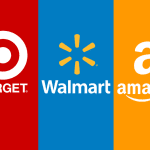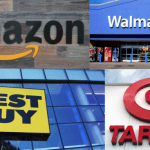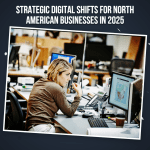Across North America, the resurgence of in-person business events signals a renewed focus on strategic engagement and brand elevation. From major hubs like Toronto to entrepreneurial cities such as Chicago and New Orleans, small and medium enterprises are revisiting the value of physical presence in a digitally saturated marketplace.
While virtual platforms offered temporary solutions during global disruption, the return to curated, face-to-face events marks a fundamental shift. These are not simply networking sessions. They are intentional environments designed to cultivate relationships, enhance visibility, and unlock measurable growth. For professionals prioritizing competitive positioning and reputational equity, participation in these gatherings is no longer optional. It is foundational.
Toronto and Chicago Lead the Rebuild
Toronto has reasserted itself as a central player in the Canadian business event landscape. The Small Business Forum 2025, hosted at Meridian Hall, has grown into a comprehensive platform for entrepreneur development. From structured mentorship to expert panels and high-traffic exhibitions, every element is engineered to facilitate brand expansion and ecosystem integration.
Similarly, the CanadianSME Small Business Summit, located at the Metro Toronto Convention Centre, has positioned itself as a premiere engagement for business leaders seeking insight, partnership, and exposure. With its emphasis on collaboration and knowledge transfer, it exemplifies the high-functioning potential of local events when well-executed.
South of the border, Chicago has reemerged as a strategic destination. The Small Biz Expo convenes thousands of stakeholders including founders, vendors, consultants, and investors. These large-scale gatherings are complemented by smaller, targeted formats such as sector-specific breakfasts and thematic roundtables.
Defining Strategic Value Beyond the Name Badge
The true value of in-person events extends far beyond basic introductions or exchanging business cards. When approached with intent, they provide strategic returns in four core areas:
1. Trust Acceleration and Lead Quality
Meeting stakeholders in person facilitates trust in ways digital interactions struggle to replicate. The nuances of body language, tone, and immediate response build rapport faster and more effectively. This, in turn, translates into high-quality leads, shorter conversion cycles, and increased deal velocity.
2. Brand Credibility and Perception
Presence at established events signals market relevance and operational confidence. Whether on stage, at a booth, or as a participant, professionals who show up in person demonstrate commitment to their industry. This visibility positions them not only as service providers but as contributors to their sector’s evolution.
3. Access to Insight and Mentorship
Event programming is increasingly curated to deliver tangible value. Keynotes and breakout sessions feature seasoned leaders offering insights rooted in experience. These are not abstract theories. They are real-world frameworks that attendees can adapt and deploy within their own operational contexts.
4. Ecosystem Development and Strategic Alignment
Well-orchestrated events attract complementary players. From suppliers and investors to regulators and media, the full business ecosystem is often represented. Strategic partnerships, talent acquisition, and co-branding opportunities frequently emerge from spontaneous, in-person conversations that could not have been engineered through online channels.
Elevating ROI Through Targeted Participation
To unlock the full value of in-person engagements, businesses must approach them with clarity and measurable goals. This includes:
- Defining event-specific objectives (e.g., partnership development, brand awareness, deal pipeline)
- Preparing branded collateral and messaging aligned with current campaigns
- Identifying high-priority attendees and pre-scheduling introductions
- Deploying post-event follow-up workflows to capture momentum
Events should be viewed as part of a broader strategic funnel, not isolated touchpoints. When executed properly, they become data-rich environments for audience behavior, market feedback, and competitive positioning.
Case Example: Calgary and New Orleans
Calgary’s Startup Week blends investor access with founder insights, offering a unique collision of capital and innovation. New Orleans, known for its “Tech for Lunch” gatherings, prioritizes informal knowledge exchange in an approachable setting. Both models demonstrate that event effectiveness is not tied to scale, but to relevance and intention.
Hosting as a Leadership Strategy
For businesses with the resources and community credibility, hosting an event elevates their strategic posture. It enables narrative control, curated guest selection, and enhanced exposure. Whether through thought leadership breakfasts, innovation showcases, or invite-only executive roundtables, event ownership signals authority and investment in sectoral growth.
Conclusion: In-Person Events as Strategic Infrastructure
In the post-virtual fatigue era, the resurgence of local business events is not nostalgic. It is tactical. As the digital advertising landscape becomes noisier and conversion rates flatten, real-world engagement offers a trusted pathway to differentiation.
For North American professionals focused on long-term value creation, growth, and reputation building, being in the room is essential. In-person events are no longer optional engagements. They are a core element of brand architecture, ecosystem connectivity, and leadership visibility.
Investing time and resources into these forums reflects an understanding of where real relationships are formed and where strategic advantage is created. In 2025 and beyond, success will not only be measured in clicks and impressions, but in handshakes and collaborations that begin with being present.









